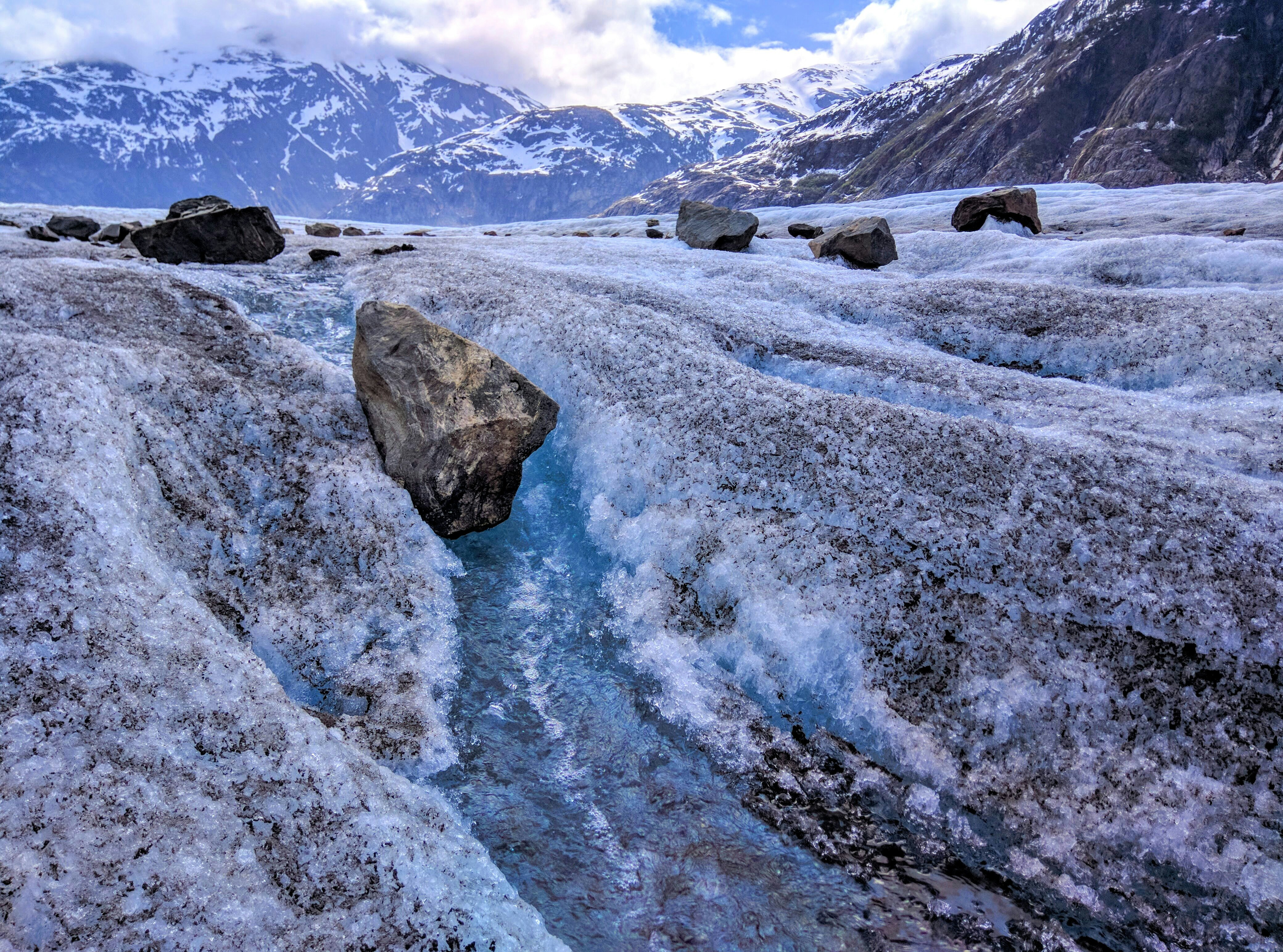In extreme cold conditions, it is crucial to understand how to prevent and treat frostbite. Frostbite occurs when the skin and underlying tissues freeze due to prolonged exposure to cold temperatures. To prevent frostbite, it is important to dress in layers, covering exposed skin areas, wear warm and insulating footwear, avoid prolonged exposure to freezing temperatures, and maintain good circulation by moving and flexing your limbs regularly. If frostbite does occur, immediate treatment is essential to prevent further damage. This article will provide you with important tips and techniques to protect yourself from frostbite and how to properly treat it if it does occur.

Understanding Frostbite
Definition of frostbite
Frostbite is a condition that occurs when the skin and underlying tissues freeze due to prolonged exposure to extremely cold temperatures. It is a serious medical condition that can lead to significant tissue damage if not promptly treated.
How frostbite occurs
Frostbite occurs when the body’s extremities, such as fingers, toes, ears, and nose, are exposed to cold temperatures for an extended period. The cold causes the blood vessels in these areas to constrict, reducing blood flow and oxygen supply to the tissues. As a result, ice crystals form, damaging the cells and tissues.
Stages of frostbite
Frostbite is categorized into three stages based on the severity of tissue damage:
-
Frostnip: The mildest form of frostbite, characterized by initial numbness and a pale or red appearance of the skin. With rewarming, the affected area usually regains its normal color and sensation.
-
Superficial frostbite: In this stage, the skin turns pale or bluish, and blisters may develop. Numbness, pain, and swelling are common symptoms.
-
Deep frostbite: The most severe form, where damage extends deep into the tissues. The skin appears white or grayish, and blisters may be present. Severe pain, lack of sensation, and tissue death are notable signs.
Symptoms of frostbite
The symptoms of frostbite vary depending on the stage and severity. Common signs include:
- Numbness or loss of sensation in the affected area
- Pale, waxy, or discolored skin
- Hard or frozen skin
- Swelling, blisters, or ulcers
- Tingling or burning sensation during rewarming
- Joint or muscle stiffness
Risk Factors for Frostbite
Impact of extreme cold
Extreme cold temperatures significantly increase the risk of developing frostbite. Sustained exposure to freezing temperatures, especially with wind chill, can accelerate the onset and severity of frostbite.
Exposure duration
The longer the exposure to cold conditions, the higher the likelihood of frostbite. Spending extended periods outdoors without adequate protection or breaks can lead to increased vulnerability.
Individuals most at risk
Certain individuals are more susceptible to frostbite. These include:
- Children, as their bodies lose heat more quickly than adults.
- Elderly individuals, as their bodies have decreased capacity to regulate temperature.
- People with circulatory problems, diabetes, or peripheral neuropathy, as these conditions can impair blood flow and sensation in extremities.
- Individuals engaging in winter sports or outdoor occupations that involve prolonged exposure to cold.
Pre-existing health conditions that may increase risk
Certain health conditions and medications can increase the risk of frostbite due to their impact on blood circulation and sensation. These include peripheral artery disease, Raynaud’s disease, and medications that constrict blood vessels.
Preventing Frostbite
Appropriate clothing and gear
Proper clothing is essential to protect against frostbite. Wear multiple layers of loose-fitting, insulating clothing. Wear a hat, scarf, and face mask to cover exposed skin. Insulated, waterproof boots and thick gloves or mittens are crucial for protecting extremities.
Limiting exposure
Minimize the amount of time spent in frigid conditions, especially during extreme cold weather. Take regular breaks indoors or in heated spaces to allow the body to warm up. Avoid activities that increase heat loss, such as sweating excessively.
Staying dry
Moisture exacerbates the risk of frostbite. Keep clothing and footwear dry to prevent heat loss and reduce the chance of frostbite. Avoid sweating excessively, as wet clothing can quickly freeze.
Warming techniques
Utilize warming techniques to maintain body heat in cold environments. These include:
- Layering blankets or using a sleeping bag for insulation
- Using hand and foot warmers
- Drinking warm fluids to increase internal body temperature
- Performing light exercises or movements to stimulate blood flow
Critical Role of Hydration and Nutrition
Proper hydration
Staying hydrated is crucial in preventing frostbite. Dehydration can impair blood circulation and reduce the body’s ability to regulate temperature. Drink plenty of fluids, including warm beverages, to maintain adequate hydration levels.
Importance of nutrients
A well-balanced diet rich in nutrients is essential for preventing frostbite. Certain nutrients, such as vitamin C and omega-3 fatty acids, promote healthy blood circulation and improve tissue resilience. Consume foods like fruits, vegetables, lean proteins, and whole grains to provide the necessary nutrients.
How dehydration and malnutrition affect vulnerability
Dehydration and malnutrition can increase the risk of frostbite. Inadequate fluid intake and poor nutrition compromise the body’s ability to regulate temperature and maintain proper blood flow. These factors make individuals more susceptible to cold-related injuries.
Recognizing Frostbite Early
Early signs of frostbite
Early recognition of frostbite is crucial for prompt treatment. Pay attention to the following signs:
- Numbness or tingling in the extremities
- Skin that feels unusually cold to the touch
- Redness, paleness, or discoloration of the skin
- Unusual sensations like pins and needles or burning
Understanding the difference between frostbite and frostnip
Frostnip is a milder form of frostbite that affects only the outermost layers of skin. It typically involves numbness and temporary skin discoloration. Unlike frostbite, frostnip does not cause permanent tissue damage and usually resolves with rewarming.
When to seek medical help
If you suspect frostbite or experience severe symptoms, it is essential to seek medical help promptly. Severe frostbite, deep tissue involvement, or signs of infection require immediate medical attention. Seek medical assistance if the affected area becomes blistered, blackened, or if you develop high fever.
First Aid for Frostbite
Initial response
When you suspect frostbite, take immediate action:
- Move to a warm sheltered area.
- Remove wet clothing and constricting items.
- Gently clean the affected area with lukewarm water.
- Avoid rubbing or massaging the frostbitten area.
Rewarming process
Rewarming frostbitten areas should be done carefully and gradually:
- Immerse the affected area in warm water (100-105°F / 38-41°C) for 15-30 minutes.
- Use a warm compress or heating pad wrapped in a dry cloth if immersing the area is not possible.
- Avoid using direct heat sources such as heating pads, fires, or hot water to rewarm.
Handling pain during treatment
Frostbite rewarming can be painful. Take over-the-counter pain relievers, such as ibuprofen or acetaminophen, if necessary. Applying a sterile dressing or padding around the affected area may help alleviate discomfort.
When to call for emergency help
Severe cases of frostbite require immediate medical attention. Call emergency services if:
- The affected person exhibits signs of hypothermia.
- The frostbitten area appears black or hardened.
- Severe pain or signs of infection develop.
- You are unsure about the severity or best course of action.
Medical Treatments for Frostbite
Medical evaluation
A medical evaluation is crucial for assessing the severity of frostbite and planning appropriate treatment. Healthcare professionals examine the affected areas, assess blood flow, and determine the extent of tissue damage.
Thrombolytics
In severe cases, thrombolytic medications may be administered to dissolve blood clots and restore blood flow to damaged tissues. Thrombolytics promote tissue survival and decrease the risk of complications.
Pain management
Pain associated with frostbite can be managed through various approaches. Over-the-counter pain medications, prescription pain relievers, or nerve blocks can help alleviate discomfort during treatment and recovery.
Potential need for surgery and amputation
In extreme cases of frostbite, surgical intervention may be necessary. Surgical options can include removing dead tissue (debridement), amputation to prevent the spread of infection, or reconstructive surgery to restore functionality.
Rehabilitation and Recovery
Physical therapy
Physical therapy plays a vital role in frostbite recovery. It focuses on restoring mobility, strength, and function to affected areas. Therapy techniques may include exercises, stretches, and therapeutic modalities like heat therapy or electrical stimulation.
Psychological support
Frostbite can have significant psychological effects on individuals. The traumatic experience and potential long-term consequences may lead to anxiety, depression, or post-traumatic stress disorder. Psychological support, counseling, and therapy can aid in coping and recovery.
Long-term effects of frostbite
Frostbite can have lasting effects, even after treatment. Possible long-term effects include increased sensitivity to cold, chronic pain, reduced sensation or mobility, and heightened vulnerability to future frostbite. Regular monitoring and follow-up care are crucial to manage these effects effectively.
Prevention of subsequent frostbite
Individuals who have experienced frostbite should take extra precautions to prevent future occurrences. This includes using appropriate clothing and gear, minimizing exposure to extreme cold, practicing good hydration and nutrition, and seeking immediate medical attention if frostbite symptoms reoccur.
Impact of Frostbite on Mountain Climbers and Hikers
Specific risks for mountain climbers and hikers
Mountain climbers and hikers face unique risks of frostbite due to their exposure to high altitudes and extreme weather conditions. Factors like wind chill, altitude sickness, and prolonged exposure to snow and ice make them more susceptible to frostbite.
Preventive measures in these situations
Prevention is paramount for mountain climbers and hikers. Some preventive measures include:
- Acclimatization to high altitudes and gradual ascent
- Wearing appropriate, insulating clothing and gear
- Using protective measures against wind, such as face masks and goggles
- Recognizing early signs of frostbite and taking immediate action
Emergency response in remote areas
In remote areas, rapid and effective emergency response is crucial. Mountain climbers and hikers should carry communication devices, such as satellite phones or locator beacons, to alert authorities in case of emergencies. Knowledge of wilderness first aid and proper rescue techniques is essential for mitigating the impact of frostbite.
Case Studies
Surviving extreme frostbite situations
Case studies of individuals who have survived extreme frostbite situations provide valuable insights into treatment approaches and long-term outcomes. Learning from those experiences aids in developing effective strategies for prevention, recognition, and early intervention.
Effectiveness of frostbite treatment
Research on the effectiveness of different treatment methods for frostbite helps guide medical professionals in providing optimal care. Studies evaluating rewarming techniques, medication administration, and surgical interventions contribute to improving treatment outcomes and reducing complications.
Long-term outcomes
Long-term follow-up studies on individuals who have experienced frostbite shed light on the potential long-term effects and complications. Understanding these outcomes allows for tailored rehabilitation approaches and improved quality of life for those affected by frostbite.
In conclusion, understanding frostbite and its various aspects is crucial for prevention, early recognition, and effective treatment. By taking appropriate preventive measures, being aware of risk factors, and promptly seeking medical attention when necessary, individuals can minimize the risk and potential complications associated with frostbite. With proper education, preparation, and care, frostbite can be prevented and effectively managed, ensuring the well-being of those exposed to extremely cold conditions. Stay safe and enjoy the winter season responsibly!


